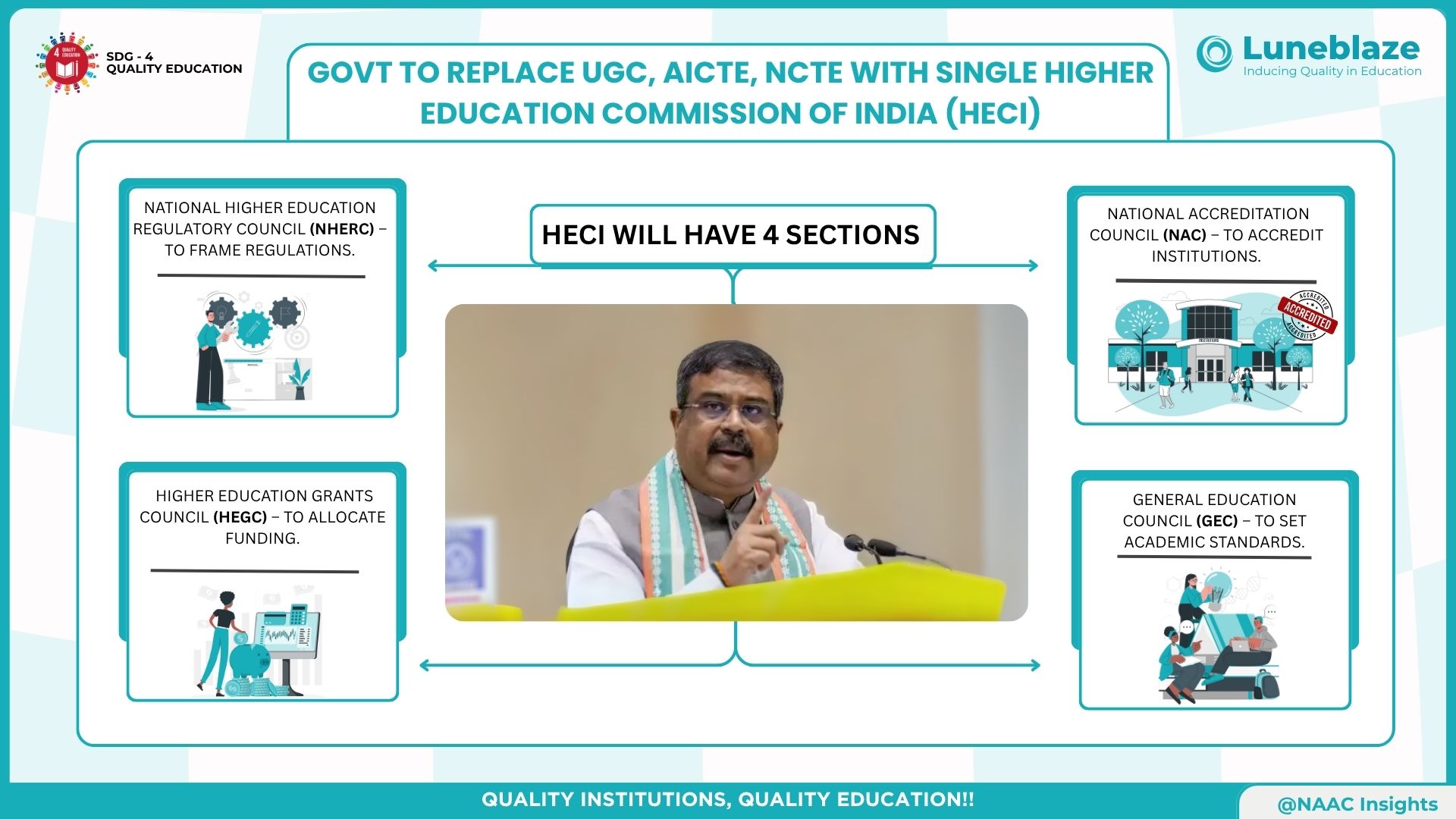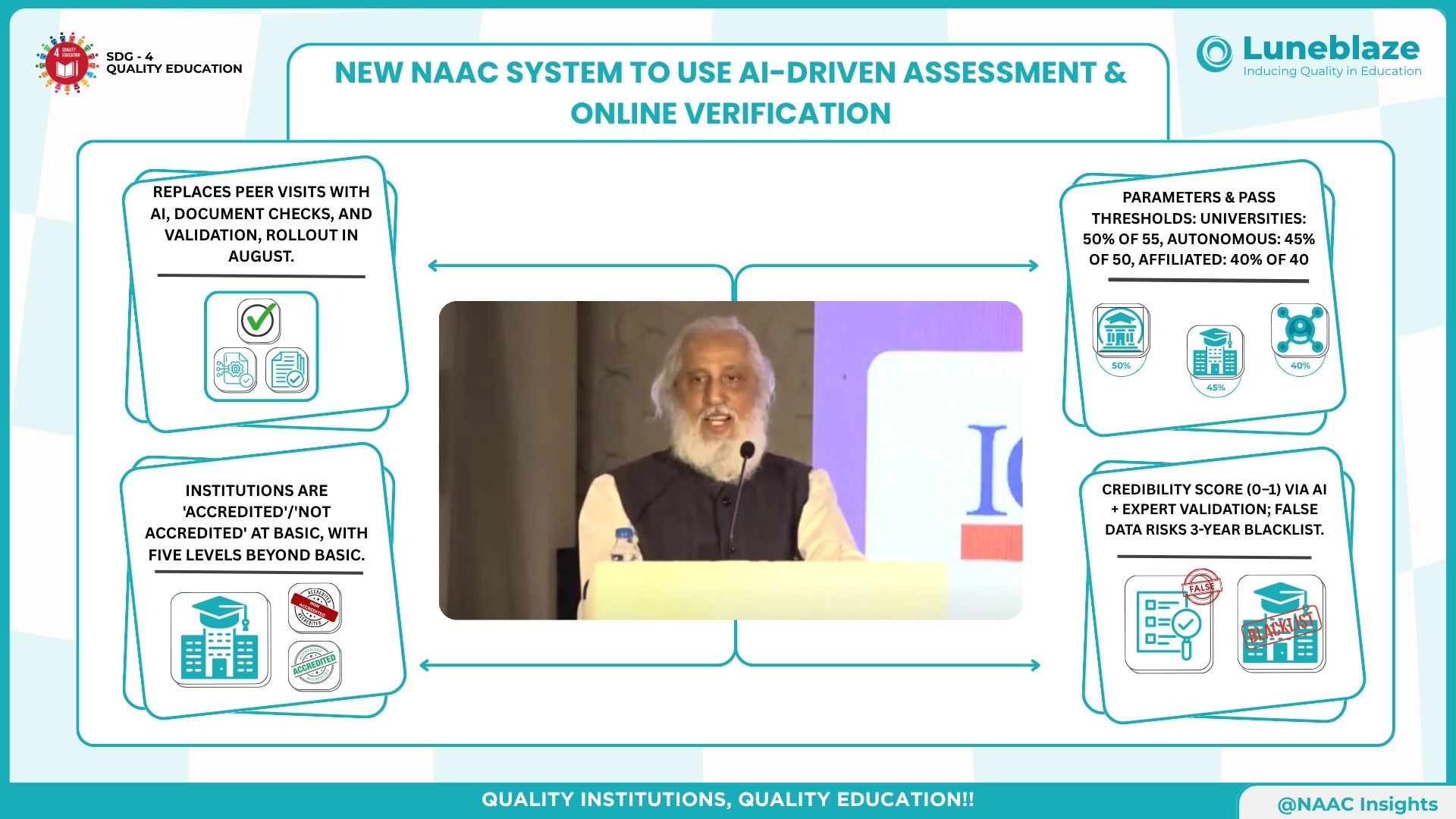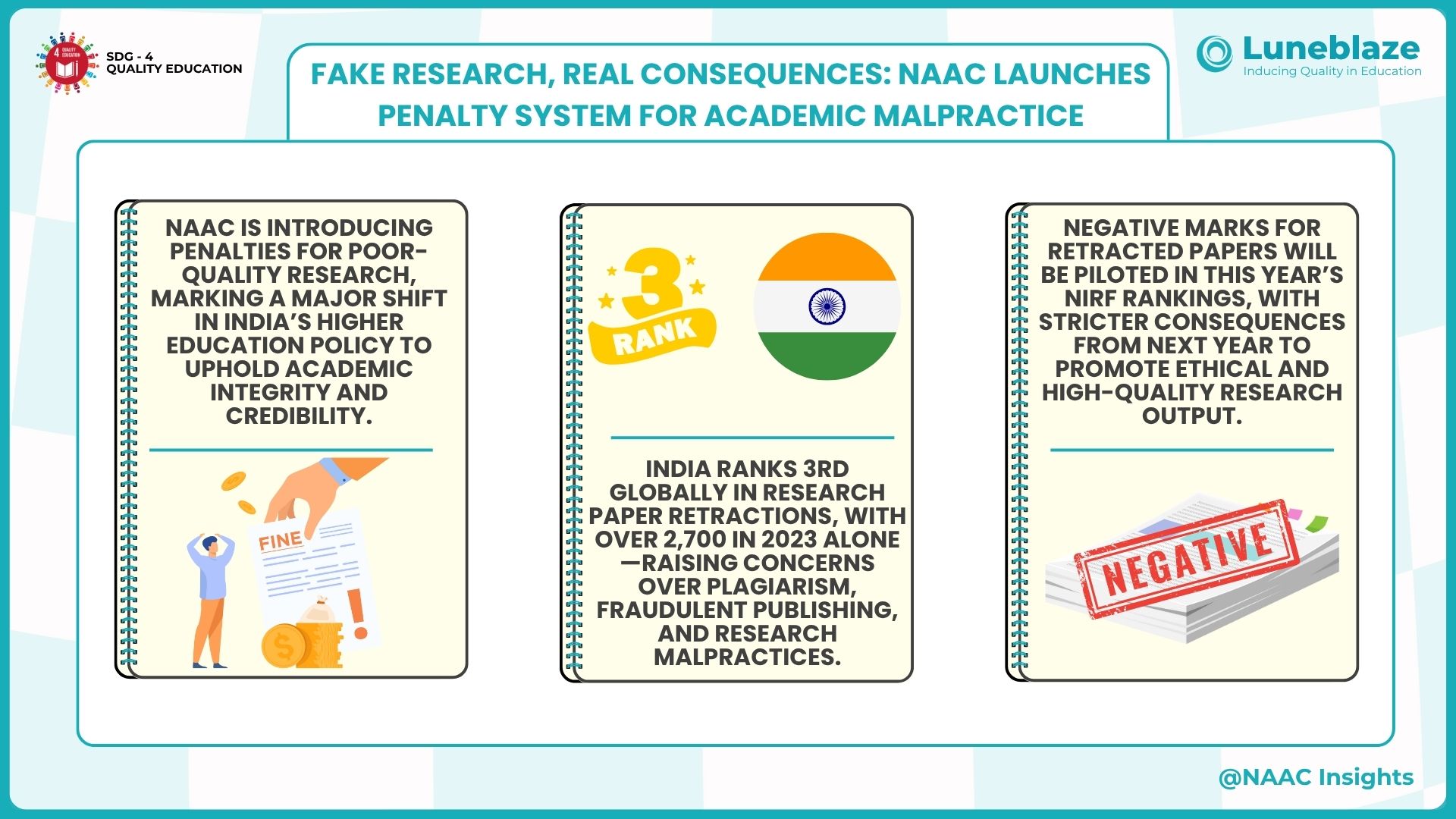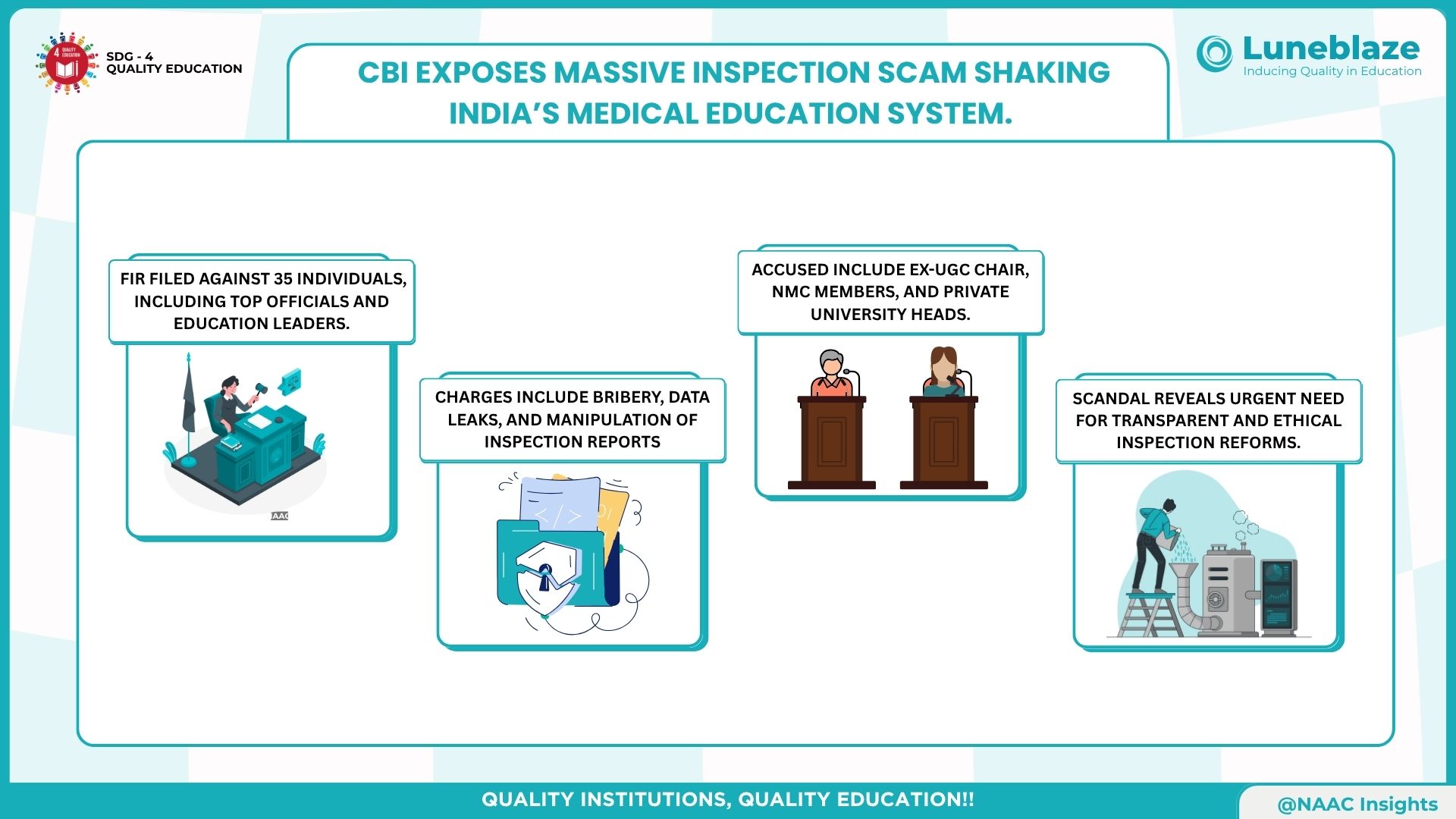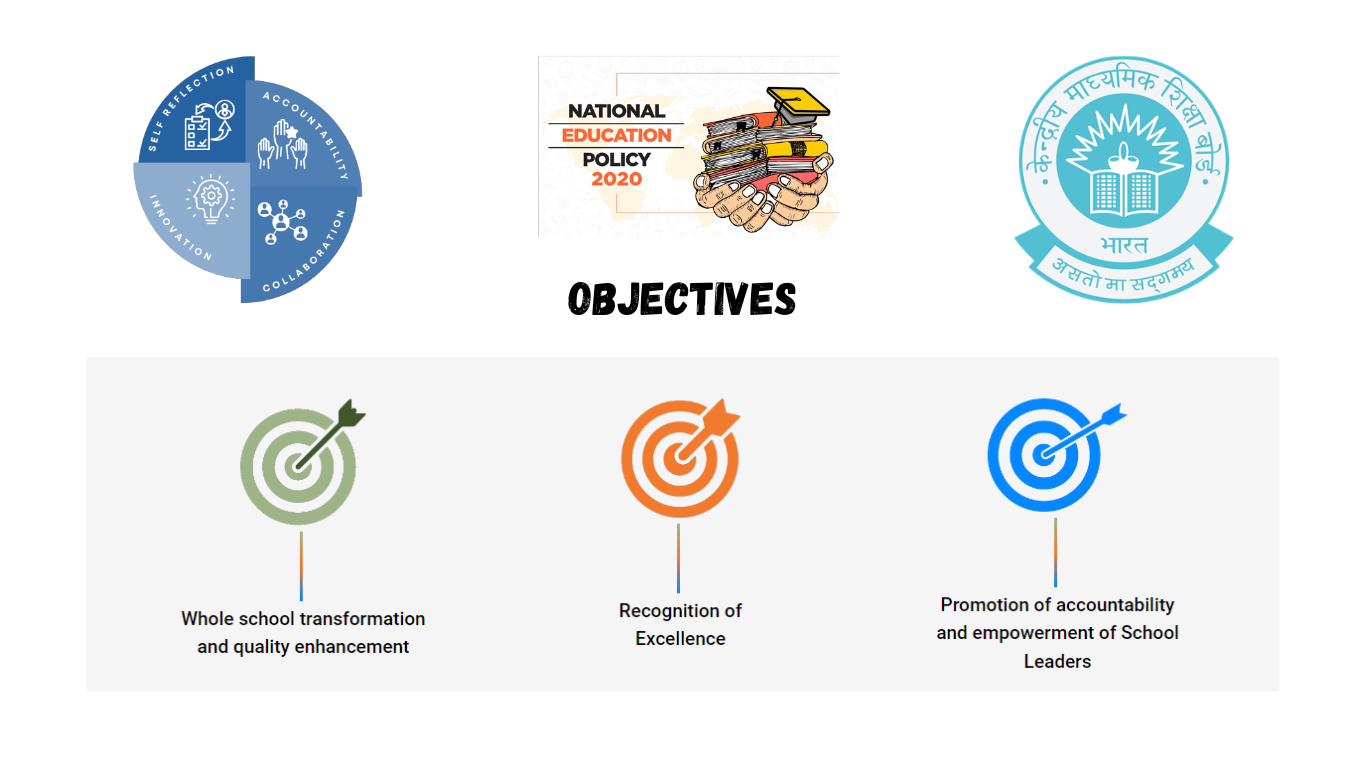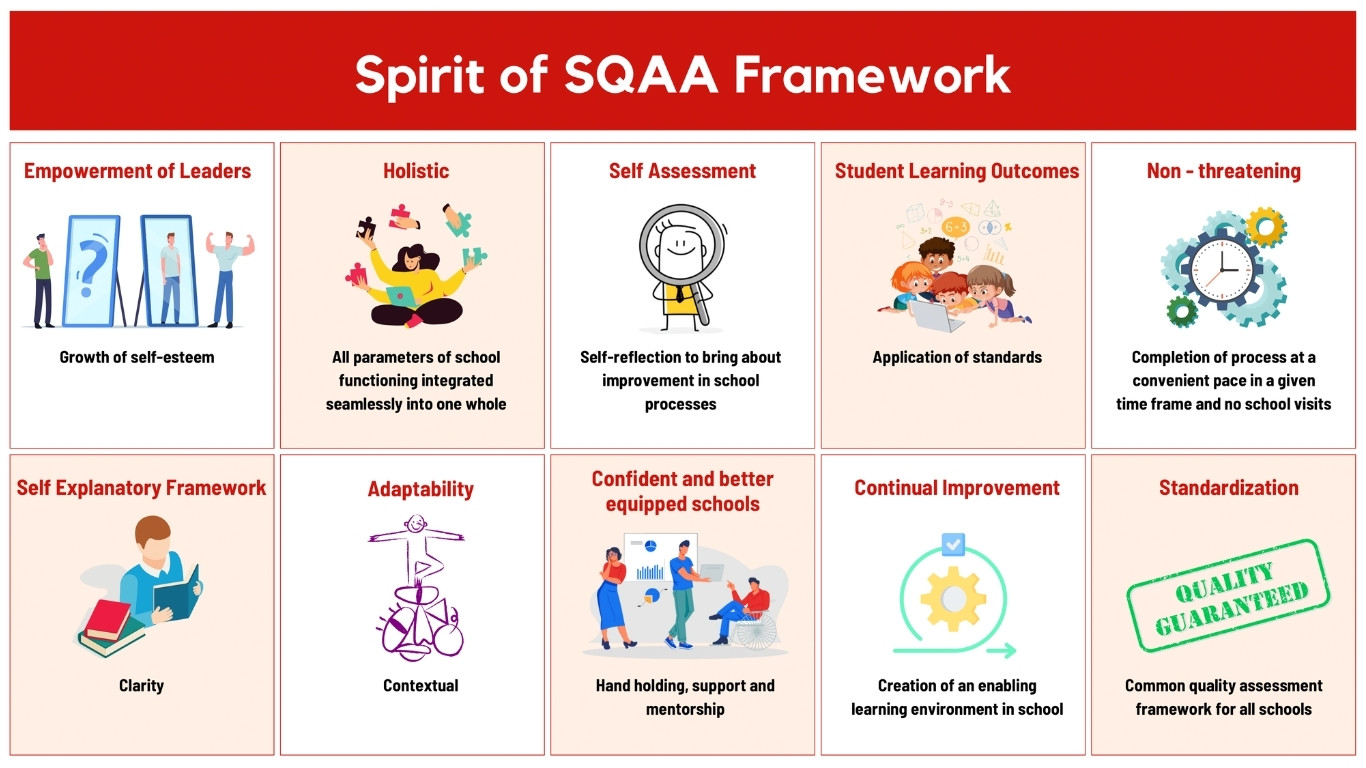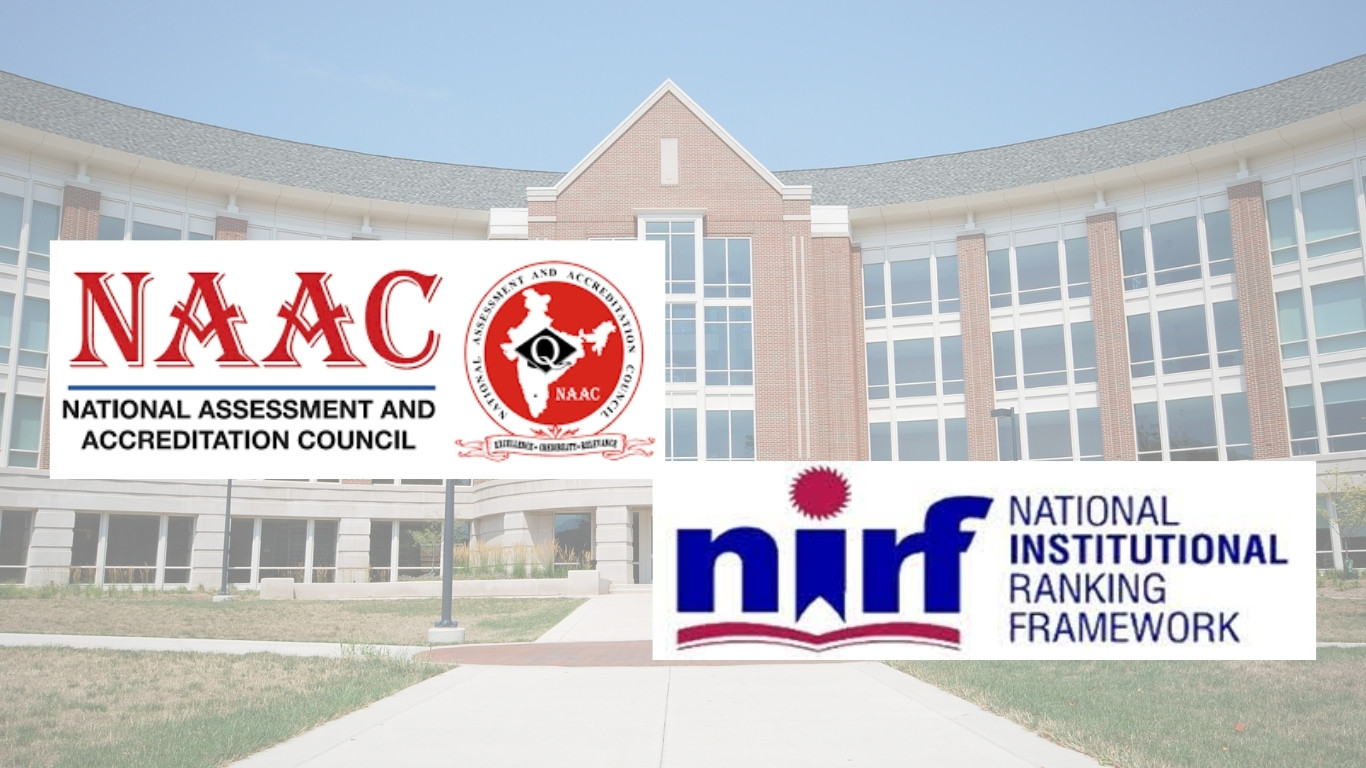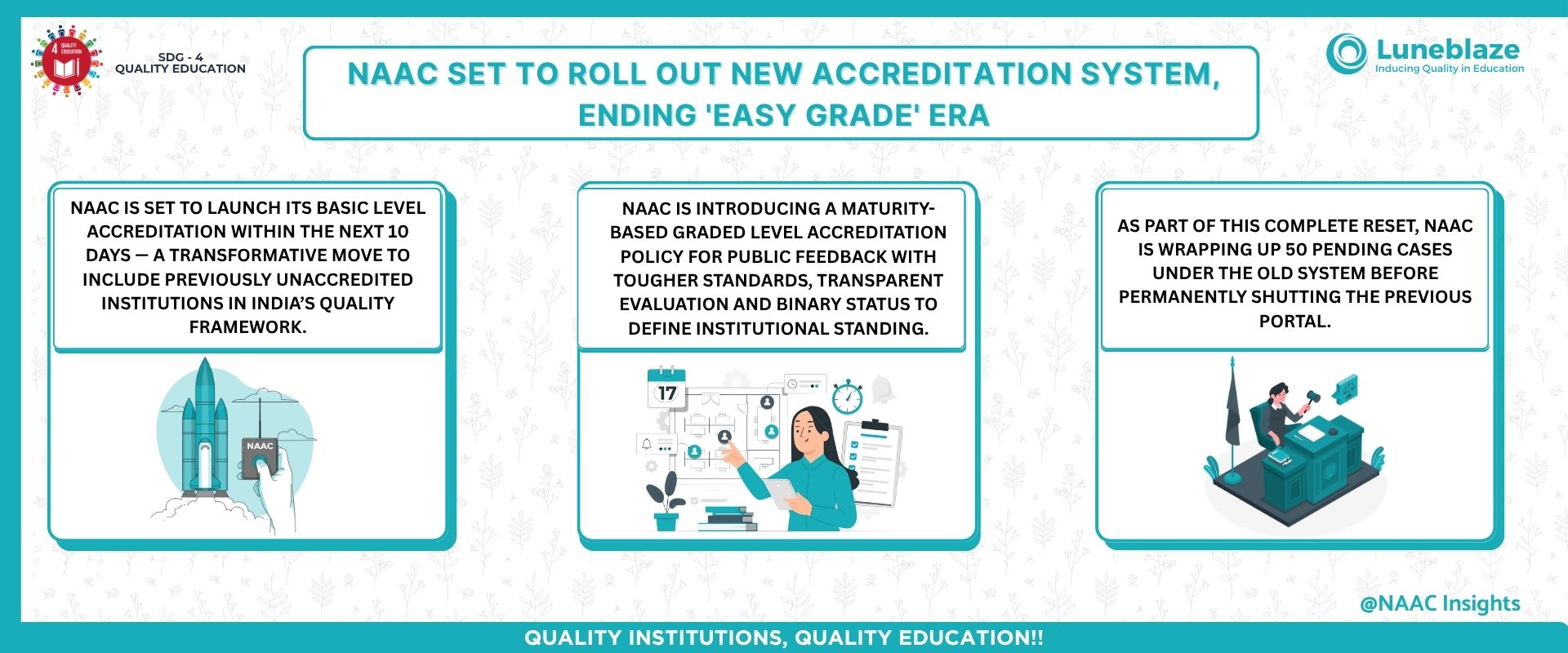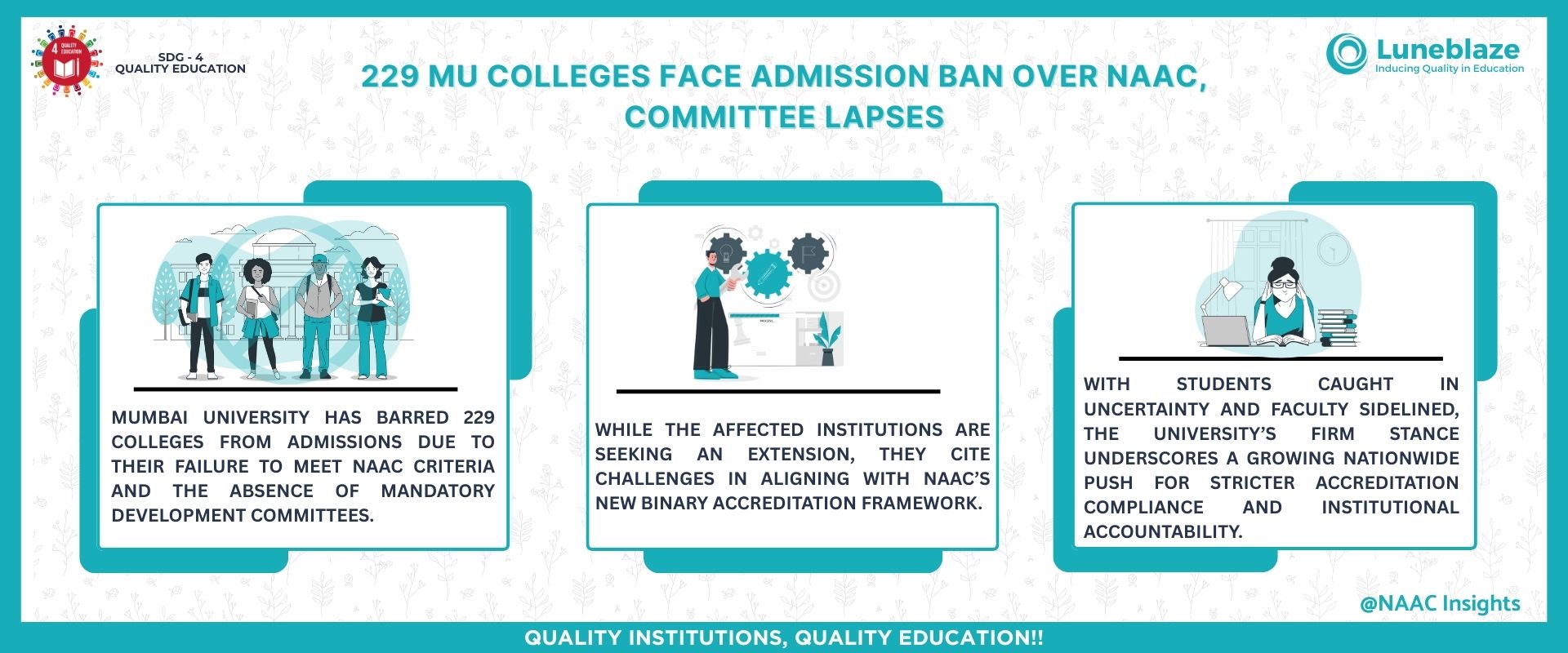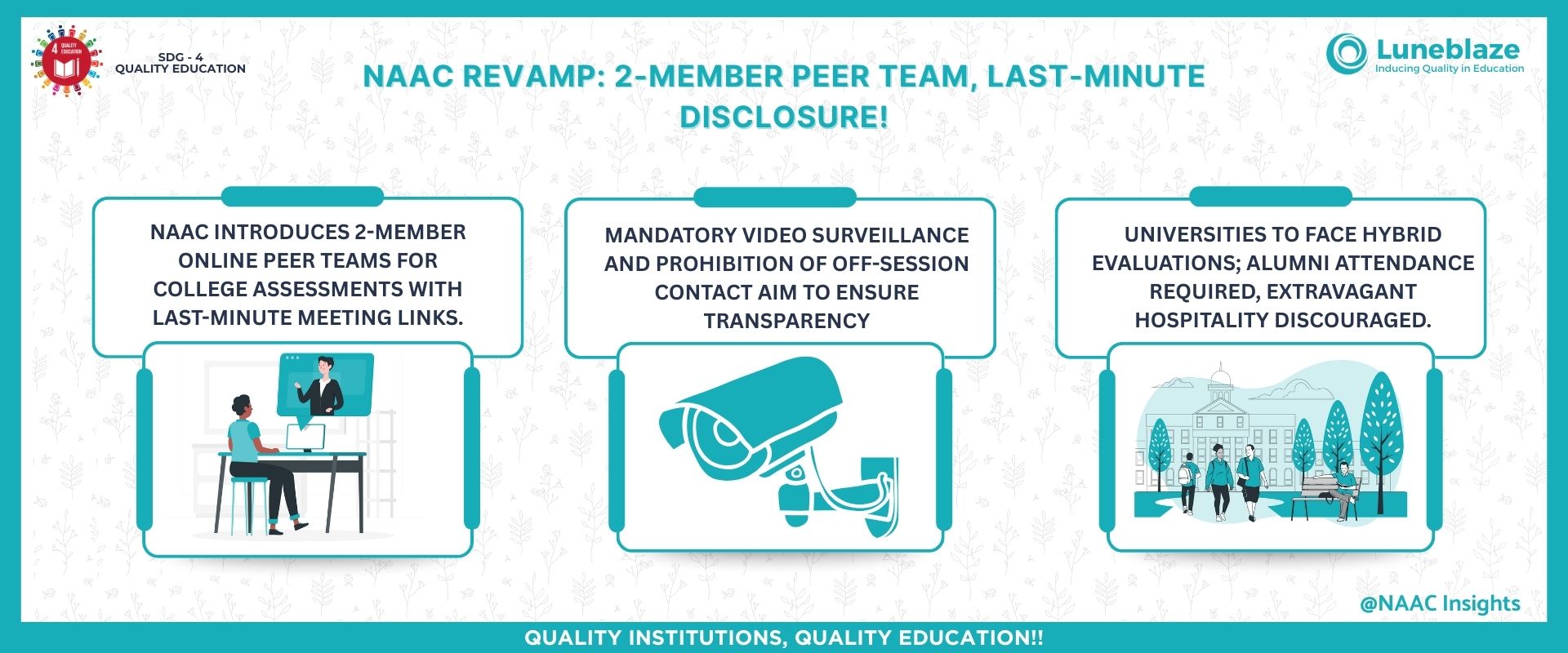NAAC to launch fully digital accreditation system on July 29, likely to be announced by PM Modi
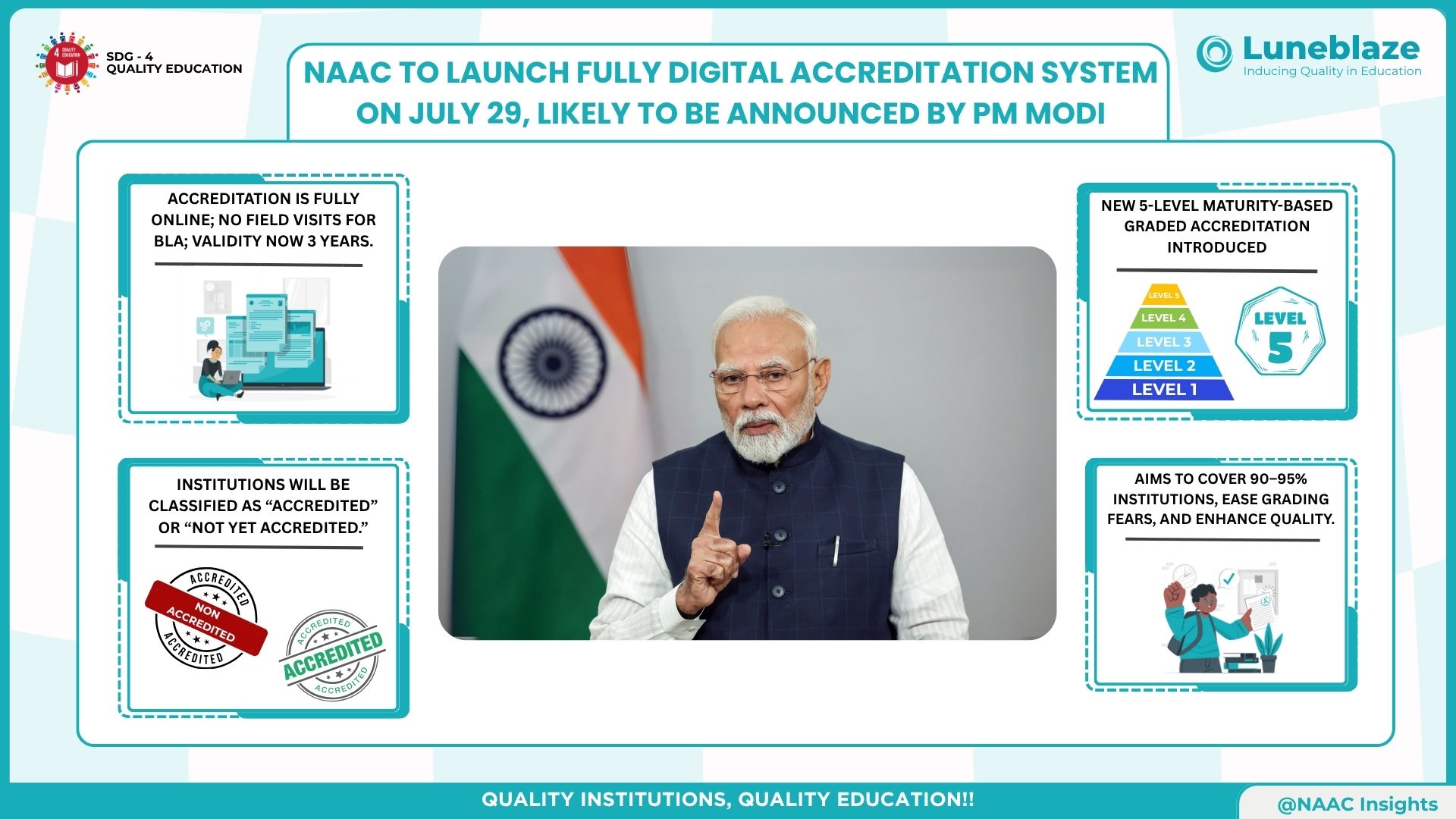
Jul 23, 2025
In a landmark move to boost transparency, accessibility, and quality in higher education, the National Assessment and Accreditation Council (NAAC) has completely overhauled its accreditation framework—introducing a fully digital, simplified system that removes long-standing barriers faced by institutions.
This transformative reform, expected to be formally launched by Prime Minister Narendra Modi on July 29, coincides with the fifth anniversary of the National Education Policy (NEP) 2020. It is aimed at ensuring that 90–95% of higher education institutions (HEIs)—compared to the current 20–40%—undergo accreditation in the coming years.
India has over 50,000 colleges and 1,170 universities, but only a small fraction are accredited due to complex procedures and fear of low grades. With the revamp, the traditional seven-scale rating system is being scrapped in favor of a more inclusive, entry-friendly model: binary accreditation, which labels institutions as either "Accredited" or "Not Yet Accredited."
“Many colleges feared poor grades and avoided applying. This new approach simplifies the process and encourages more institutions to come forward,” said Prof. Anil Sahasrabudhe, Chairman of NAAC’s Executive Council.
The new Basic Level Accreditation (BLA) will require no field visits, allowing colleges and universities to apply completely online. Accreditation validity will now be three years, down from five, ensuring more frequent quality checks and sustained improvement.
A Tiered, Maturity-Based Pathway to Excellence
NAAC will also introduce a Maturity-Based Graded Accreditation system, a five-level framework (Levels 1 to 5) that allows institutions to progressively improve. Here’s how it works:
Level 1 & 2: Fully online, minimal barriers—ideal for new or small institutions
Level 3: Hybrid model—includes both online and onsite assessments
Level 4 & 5: Highly stringent, only for institutions delivering world-class education
Institutions with robust quality systems may also apply directly for higher levels, bypassing the initial steps if they meet qualifying benchmarks.
“Level-5 will be awarded only to those matching international standards,” added Sahasrabudhe.
Why This Matters
Accreditation is a critical quality benchmark that helps students make informed decisions, assures parents of institutional reliability, and enables institutions to access grants, autonomy, and global collaborations.
The move comes at a time when India’s higher education sector is under global scrutiny—making transparency, digital governance, and institutional accountability more important than ever.
By shifting from grades to growth, and from audits to empowerment, NAAC is ushering in a new era of meaningful accreditation—where quality is not just measured, but nurtured.
Stay tuned with Luneblaze for exclusive updates on India’s accreditation reform journey.
Source: The new Indian express
Trusted by
100+
Institutions
worldwide
since 2017
Get started with Accreditation Excellence
Explore how our AI-enabled accreditation solution simplifies the accreditation journey

